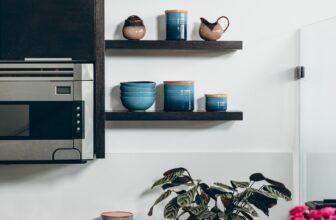
Are you looking to start fermenting at home but not sure where to start? Fermenting is a great way to preserve and enhance the flavors of your favorite foods while also adding beneficial probiotics to your diet. To kickstart your fermenting journey, you’ll need the right tools to ensure successful fermentation and delicious results. In this article, we’ll explore the best kitchen tools for fermenting at home, from fermentation vessels to accessories that make the process easier and more enjoyable.
**1. Fermentation Vessels:**
**Keywords: fermentation vessels, fermenting crocks, mason jars, airlocks**
– Fermenting Crocks: These traditional vessels are perfect for fermenting large batches of sauerkraut, pickles, and other vegetables. They provide a controlled environment for fermentation and come in various sizes to suit your needs.
– Mason Jars: Affordable and versatile, mason jars are great for small-batch fermenting. They are easy to find and come in different sizes, making them ideal for experimenting with different recipes.
– Airlocks: Airlocks are essential for preventing contamination during fermentation by allowing gases to escape without letting oxygen in. They come in various designs, such as water-sealed or bubbler airlocks, and can be used with different types of fermentation vessels.
**2. Weights and Presses:**
**Keywords: fermentation weights, cabbage tamper, glass fermentation weights**
– Fermentation Weights: These weights help keep your fermenting vegetables submerged under brine, preventing mold growth and ensuring even fermentation. They come in various materials like glass, ceramic, and stone, and are designed to fit different fermentation vessels.
– Cabbage Tamper: A cabbage tamper or kraut pounder is used to pack down vegetables tightly in the fermentation vessel, releasing their juices and eliminating air pockets. It helps create the perfect environment for fermentation and ensures a successful batch every time.
– Glass Fermentation Weights: Glass fermentation weights are non-reactive and easy to clean, making them a popular choice for fermenting enthusiasts. They come in various shapes and sizes to fit different jars and crocks.
**3. pH Strips and Thermometers:**
**Keywords: pH strips, fermentation thermometer, digital pH meter**
– pH Strips: Monitoring the pH level of your fermenting brine is crucial for ensuring food safety and successful fermentation. pH strips provide a simple and affordable way to check the acidity of your ferment, helping you avoid spoilage and achieve the desired flavor profile.
– Fermentation Thermometer: Maintaining the right temperature is key to successful fermentation. A fermentation thermometer allows you to monitor the temperature of your fermenting vessel, ensuring optimal conditions for the growth of beneficial bacteria.
– Digital pH Meter: For more precise measurements, a digital pH meter is a valuable tool for serious fermenters. It provides accurate readings of the acidity level in your ferment, giving you greater control over the fermentation process.
**4. Fermentation Kits and Starter Cultures:**
**Keywords: fermentation starter kit, kombucha SCOBY, kefir grains, sourdough starter**
– Fermentation Starter Kit: If you’re new to fermenting, a fermentation starter kit is a convenient way to get everything you need to start fermenting at home. These kits often come with fermentation vessels, weights, airlocks, and recipe guides to help you get started.
– Kombucha SCOBY: Kombucha is a popular fermented tea beverage that requires a SCOBY (symbiotic culture of bacteria and yeast) to ferment. You can purchase a SCOBY online or from a fellow fermenter to start brewing your own kombucha at home.
– Kefir Grains: Kefir is a fermented dairy product made with kefir grains, which are a mixture of bacteria and yeast cultures. These grains can be used to make homemade kefir, a probiotic-rich beverage that’s great for gut health.
– Sourdough Starter: If you’re interested in baking sourdough bread, you’ll need a sourdough starter to begin the fermentation process. You can make your own starter from scratch or purchase one from a reputable source to kickstart your sourdough baking adventures.
**5. Storage Containers and Labels:**
**Keywords: glass storage jars, labels for fermenting, fermentation jar lids**
– Glass Storage Jars: Once your ferment is ready, you’ll need proper storage containers to keep your fermented foods fresh and flavorful. Glass jars with airtight lids are ideal for storing fermented foods in the refrigerator or pantry.
– Labels for Fermenting: Keeping track of your fermenting projects is essential for proper rotation and organization. Use labels to mark the date, recipe, and any special instructions for each batch, making it easier to track the progress of your ferments.
– Fermentation Jar Lids: If you’re using mason jars for fermenting, consider investing in special fermentation lids that allow carbon dioxide to escape while keeping oxygen out. These lids are designed to create an anaerobic environment for fermentation and reduce the risk of mold contamination.
**Conclusion:**
In conclusion, having the right kitchen tools for fermenting at home is key to successful and enjoyable fermentation projects. From fermentation vessels and weights to pH strips and starter cultures, each tool plays a crucial role in the fermentation process. By investing in quality tools and following best practices, you can create delicious fermented foods that are rich in probiotics and full of flavor. So gather your tools, pick your favorite recipes, and start fermenting your way to healthier eating and culinary adventures!
**FAQ Section:**
**Q: Can I use regular jars for fermenting?**
A: While regular jars can be used for fermenting, it’s important to ensure that they are made of food-safe materials and can create an airtight seal. Mason jars are a popular choice for fermenting, as they are affordable, widely available, and easy to use.
**Q: How long does the fermentation process take?**
A: The fermentation process can vary depending on the recipe and environmental factors like temperature and humidity. Ferments typically take anywhere from a few days to several weeks to reach their desired flavor and texture. It’s important to taste your ferment periodically to monitor its progress and adjust as needed.
**Q: What are some common mistakes to avoid when fermenting at home?**
A: Some common mistakes to avoid when fermenting at home include using unclean equipment, not submerging your vegetables under brine, fermenting at the wrong temperature, and not monitoring the pH level of your ferment. By following best practices and using the right tools, you can avoid these pitfalls and ensure successful fermentation every time.
Ready to start fermenting at home? Invest in the best kitchen tools for fermenting and embark on a delicious and nutritious journey of homemade fermented foods. Have fun experimenting with different recipes, flavors, and techniques, and don’t forget to share your fermenting adventures with fellow enthusiasts. Happy fermenting!






